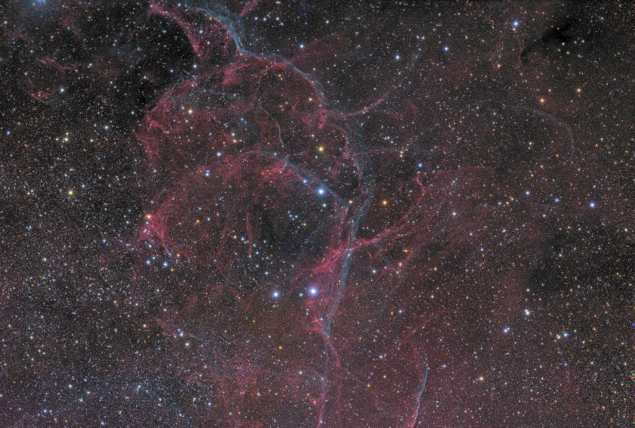Spanning 13 decades in energy and more than 26 decades in intensity, cosmic rays are one of the hottest topics in astroparticle physics today. Spectral features such as a “knee” at a few PeV and an “ankle” at a few EeV give insights into their varying origins, but studies of their arrival direction can also provide valuable information. Though magnetic fields mean we cannot normally trace cosmic rays directly back to their point of origin, angular anisotropies provide important independent evidence towards probable sources at different energies. This week, at the 37th International Cosmic Ray Conference (ICRC), a range of space- and ground-based experiments greatly increased our knowledge of cosmic-ray anisotropies, with new results spanning 10 decades in energy, from GeV to tens of EeV.

At sub-TeV energies, spectral features seen by the AMS-02 and CALET detectors on the International Space Station and the Chinese–European DAMPE satellite could potentially be explained by a local galactic source such as a supernova remnant like Vela (see “Spectral” figure). If a nearby source is indeed responsible for a significant fraction of the cosmic rays observed at such energies, it could show up in the arrival direction of these cosmic rays in the form of a dipole feature, despite bending by galactic magnetic fields; however, results from AMS-02 at ICRC showed no evidence of a dipole in the arrival direction of protons or any other light nucleus. This was confirmed by DAMPE, which excluded dipole features with amplitudes above about 0.1% in the 100s of GeV energy range. The search continues, however, with DAMPE, AMS-02 and CALET all set to take further data over the coming years.
Close to the knee, the dipole has a maximum rather than a minimum close to the galactic centre
Moving to higher energies, clear anisotropic dipole excesses have been observed over the last decade by ground-based experiments such as the ARGO-YBJ observatory in China, the HAWC observatory in Mexico and the IceCube observatory at the South Pole – though with different “phases” at different energies. The anisotropy in the TeV to the 100s of TeV energy range could point towards a nearby source, though models proposing the structure of the interstellar magnetic field as the true origin for the anisotropy also exist. This feature was further confirmed this year by the LHAASO experiment in China, using a year of data that was taken while constructing the detector. The results from LHAASO also confirm a switch in the phase of the anisotropy when moving from 100s of TeV to PeV energies, as reported by IceCube and other experiments in recent years: at PeV energies, close to the knee, the dipole has a maximum rather than a minimum close to the galactic centre. This could indicate an excess of “pevatron” sources near the galactic centre.

Extragalactic sources
While results up to PeV energies give an insight into sources within our galaxy, it is theorised that the flux starts to be dominated by extragalactic sources somewhere between the knee and the ankle of the cosmic-ray spectrum. Evidence for this was increased by new results from the Pierre Auger Observatory in Argentina and the Telescope Array in the US. These two observatories, which observe different hemispheres, find strong evidence for excesses in the cosmic-ray flux in certain regions of the sky at energies exceeding EeV. At energies as high as these, cosmic rays point more clearly to their origin, and galactic cosmic rays should have very clear point-like sources that are not observed, providing evidence that they originate outside of our galaxy. A prime candidate for such sources are so-called starburst galaxies, wherein star formation happens unusually rapidly, during a short period of the galaxy’s evolution (see “Antennae galaxies” figure). As presented at ICRC 2021, the available data was fitted to models where starburst galaxies are the primary source of EeV cosmic rays. The model fits the anisotropy data with more than 4σ significance relative to the null hypothesis with normal galaxies, indicating starburst galaxies to likely be at least one source of EeV cosmic rays.
While some of the features will likely be fully confirmed within the coming years simply by accumulating statistics, new features are also likely to arise. One example is further constraints on the lack of any observed anisotropy at sub-TeV energies using data from space-based missions, while new data from ground-based experiments will start to bridge the measurement gap between PeV and EeV energies. The latter will be especially important in gaining an understanding of the energy scale at which extragalactic sources start to dominate. To fully exploit the data it will be necessary to compare complex cosmic-ray-propagation simulations with diverse data such as the pevatron sources discovered this year by LHAASO.






